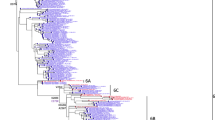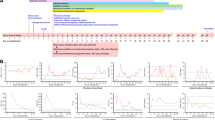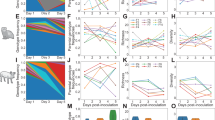Abstract
The looming influenza pandemic has focused attention^1-4^ on the rapid evolution of H5N1 and other human and avian serotypes. The basic tenets of influenza genetics^5^ define gradual changes as drifts caused by point mutations created by a polymerase that lacks a proof reading function. More abrupt changes have been linked to reassortment, which shuffles the eight sub-genomic segments of the influenza genome in dually infected host. The complex evolution of these viruses has created a challenge in vaccine development. Swine influenza isolates from 2003 and 2004 have been identified^6^ that have acquired a human influenza gene, PB1. My analysis of the eight gene segments found large portions of two genes, PB2 and PA, which were identical matches with 1977 swine isolates^7,8^. Additional regions were exact matches with 1998 and 2002 isolates,^9,10^ demonstrating homologous recombination between earlier genomes. The absolute fidelity discounts the role of point mutations in gene drift. Moreover the human PB1 gene represented a reservoir for acquisition of polymorphisms in human seasonal flu. These observations challenge the basic tenets of influenza genetics and provide a method for predicting the changes in seasonal and pandemic influenza, as well as other rapidly evolving genomes.
Similar content being viewed by others
Article PDF
Author information
Authors and Affiliations
Corresponding author
Rights and permissions
About this article
Cite this article
Niman, H. Swine Influenza A Evolution via Recombination - Genetic Drift Reservoir. Nat Prec (2007). https://doi.org/10.1038/npre.2007.385.1
Received:
Accepted:
Published:
DOI: https://doi.org/10.1038/npre.2007.385.1



